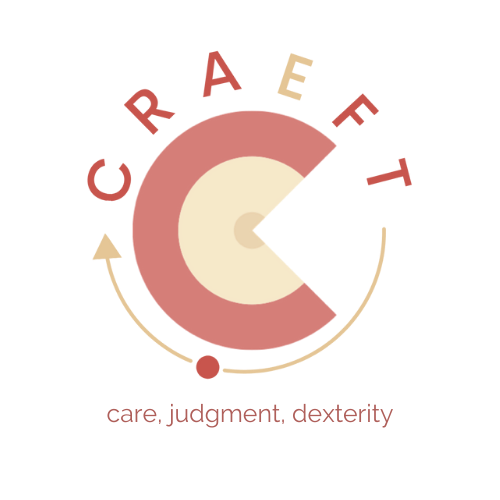Craeft Pilot I: Experiment and Implementation at CERFAV, Glass School
The Pilot I experiment continued on the basis of the work carried out in the first year of the project, where the foundations were laid by recording and understanding the glass craftsmanship gestures and compiling a collection of contents of the workshops, tools and machines used.

Credit: Julia Schaff , Cerfav (2023). Maxime Rosseel and Johanna Pierret during the glass recording session at CERFAV.
The approach has been to refine the educational methodology by defining usage scenarios so that each digital tool can be optimally integrated into existing learning programmes. We also looked at how to assess the impact of digital tools on existing curricula. Finally, in the spirit of an inductive learning approach, we proposed methods and tools inspired by active pedagogy, in order to best mobilise the interest and motivation of learners.
In June 2024, we presented the Craeft project to apprentices entering the second year of the CPC course [exempt from general subjects and working on a personal project], and organised a creative workshop with them to discuss their expectations, issues and proposals.

Credit: Mad’in Europe (2024). Implementation of the Pilot I, Noël Crescenzo, educational engineer at CERFAV.
What emerged was a maturity of posture, questioning the challenges of digitising craft skills and the added value of digital tools in terms of practical use in workshops and apprenticeships.
“ We should be aware that the digital tools we’re about to deploy are still in their testing phase … That’s why it is important to involve our students at an early stage of the development process.”
Noël Crescenzo, teacher, glassmaker, and project coordinator at CERFAV
Additional modules have been developed on the e-learning platform for cross-disciplinary subjects, HSE, general technology and technical drawing, as well as a module on the important concepts to know before entering the workshop. We have taken care to diversify the learning aids: texts, images, diagrams, videos and audio. We broke down the knowledge to be acquired in a way that respected the principles of cognitive load theory, and in particular proposed preliminary quizzes for each module created in order to personalise the learning path and ensure that learners remained motivated.
In collaboration with our partners, Khora, a VR glassblowing simulator has been developed, focusing on the act of gathering glass with a pipe.
Pilot Evaluation
In September and November 2024, we conducted an experiment with second-year CPC apprentices in various glass specialities. Two cohorts were established, one using Craeft digital tools in addition to the existing curriculum, the test group, Traditionnel Augmenté – TA, focused on glassblower with a pipe, the other being in a traditional curriculum, the control group, Traditionnel -T. A trial of the e-learning platform and the VR glassblowing workshop simulation was carried out with the TA group. Evaluation questionnaires and individual interviews were done to measure the impact of the Craeft digital tools on learning.

Credit: Mad’in Europe (2024). Testing of the VR with David Arnaud, project coordinator at CERFAV.
The so far evaluation covered several, following areas:
A quantitative field analysing the results of evaluations with their trainer and at the CPC diploma in order to compare the results of the two cohorts. Partial results to date, as the school year is still underway.
A qualitative field, with questionnaires on mastery, appropriation and satisfaction with the use of Craeft tools, e-learning and the VR glassblowing simulator.
A peripheral and qualitative field, with individual interviews on the use of Craeft or non-Craeft digital tools in carrying out their personal project, in order to gain a better understanding of the perception, culture and use of digital tools in general by the learners.
Initial results show that the digital tools have been well accepted and mastered. The e-learning platform is seen as a complementary tool to the courses given by the trainers, making it easier to memorise and review concepts. The VR glassblowing simulator is seen as a good tool for discovery, but an expectation of hyperrealism in the immersive experience and precision in the rendering of gestures does not position this tool as a learning tool in its current state of maturity in their eyes. The tools are perceived and used in a very pragmatic way depending on the practical interest they bring, and a high level of expectation about their improvement is expressed, which indicates their appropriation.
This initial positive trial has given us some ways for improving the scenarios and digital Craeft tools used in education and training.




